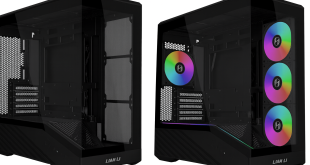The Asus Transfer Express is an interesting device which possesses unique features that may be desirable to a number of people. Asus has glued together functionality from individual devices and software tools into a single cross-platform control hub, and the solution is a good one overall.
I like the PC-to-PC and PC-to-Android keyboard and mouse sharing. The overall usage experience was hassle-free; the shared keyboard and mouse was great for controlling multiple PCs simultaneously, and I was even able to play real PC games through my Nvidia Shield tablet. An improvement here would be the option for a more seamless PC-to-Android keyboard/mouse switch than a hotkey.
Audio Playback mode is, in theory, a smart way of playing your handheld device's music through PC speakers. However, my testing delivered intermittent popping during playback (through very cheap speakers, I might add) that made the hassle of manually switching speaker connectors worth it over the Transfer Express alternative. Android File Transfer didn't seem to be any different to a standard USB connection.
PC-to-PC monitor modes worked well. The mirror and extended modes could be particularly useful to owners of a single-input, G-Sync monitor who do not want the fuss of continually switching cables. The Extended mode makes it possible for laptop with a single video output to be used with more than one additional monitor. This is a big positive for multi-tasking users.
File Synchronisation was one of the Transfer Express' defining functions. While there are plenty of methods for transferring files between systems, Asus' solution is a simple one-click process that results in speedy transfers thanks to 5Gbps USB 3.0. I would like to see even more features provided with the synchronisation mode, such as the ability to sync multiple folders simultaneously and to choose from a user-defined ‘commonly synced' list.
The biggest adjustment that I would like to see on the Asus Transfer Express is functionality with other vendors' hardware when the device bundle hits retailers in the coming months. If an Asus motherboard is deemed a requirement for the primary PC, that is understandable, but forcing both PCs to be Asus hardware seems unnecessary and very restrictive. After that update, some form of wireless connectivity (namely NFC/Bluetooth and WiFi) would be the next improvement, and perhaps even integration into an Asus laptop.
Discuss on our Facebook page, over HERE.
KitGuru says: Transfer Express is Asus' unique take on a cross-platform control hub. It won't be for everybody, and some enhancements are needed to improve its desirability, but we must praise the successful solutions to a number of problems that Asus has provided by way of a diminutive box.
 KitGuru KitGuru.net – Tech News | Hardware News | Hardware Reviews | IOS | Mobile | Gaming | Graphics Cards
KitGuru KitGuru.net – Tech News | Hardware News | Hardware Reviews | IOS | Mobile | Gaming | Graphics Cards




No price, no performance, 0 comparison…. is this the manual that I’m reading?
Just what exactly are we reviewing here? The technology? Then just set up a samba share on a random linux and be done with it.
Jeez.
The unit isn’t near release yet, so there is no pricing information. We will update the article as soon as any pricing info comes through.
Performance of the USB 3.0 PC-to-PC transfer is shown. There’s also a video showing keyboard and mouse usage with an Android device, and multi-monitor configuration with two PCs. What other performance metrics would you like to see?
There’s mention of comparable methods, like an external USB 3.0 storage drive for file transfer (including performance numbers), Synergy for Android keyboard and mouse usage, native video output connections, etc..
This article is not a review. It is about the usage of Transfer Express, as the title says. There’s intentionally no score or award, because it’s not a review. It is an early look at the device/technology which is still months away from market and may undergo functional updates in the mean time. Some people may want a simple way of doing some of the tasks that Transfer Express is built for, hence why the article looks at its functionality and potential usage scenarios (as well as suggested improvements, in case you didn’t see them). Obviously if you have other ways of solving similar productivity tasks, Transfer Express is not for you.
Luke
Fair enough.
Binfer is a better way to transfer files between computers. It is the fastest and least complicated tool I have seen so far. http://www.binfer.com.
< col Hiiiiiii Friends….uptil I saw the paycheck saying $8736 , I have faith that my neighbour woz actualy receiving money parttime from their computer. . there friends cousin has done this 4 only about thirteen months and by now repaid the loans on there mini mansion and got a great GMC . visit their website SEE FULL DETAIL
~~~~~~~~~~~~~~~~~~~~~~~~~~~~~~~~~~~~~~~~~~~~~~~~~~~~~~~~~~~~~~~~~~~~~~~~~~~~~~~~~~~~~~~~~~~~~~~~~~~~~~~~~~~~~~~~~~~~~~~~~~~~~~~~~~~~~~~~~~~~~~~~~~~~~~~~~~~~~~~~~~~
The unit is as outdated and dead as SATA EXPRESS. No one is going to waste their time with this crap when you can use an external SSD or flash drive or even better, a 10Gb NIC between 2 PCs. I have 2 X99-A 3.1 boards and 950 PROs, but would not buy this thing since a NIC is better.
Here’s the speed of 3.1, which this device should have taken advantage of. http://www.overclockers.com/usb-3-1-testing-asus-goes-usb-3-1-capable-motherboards/